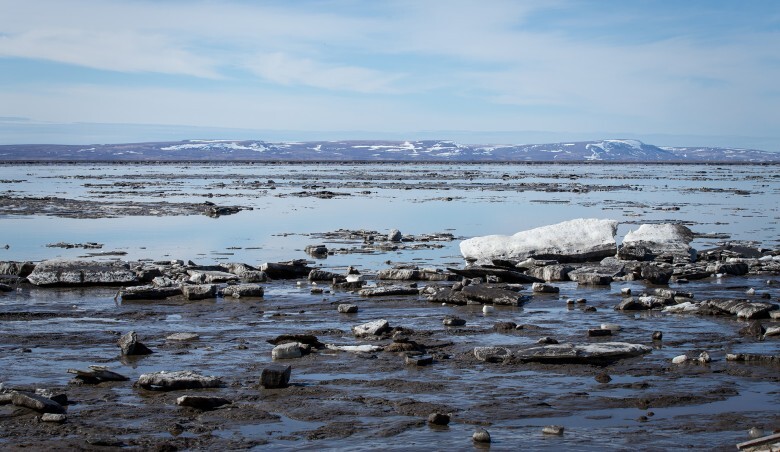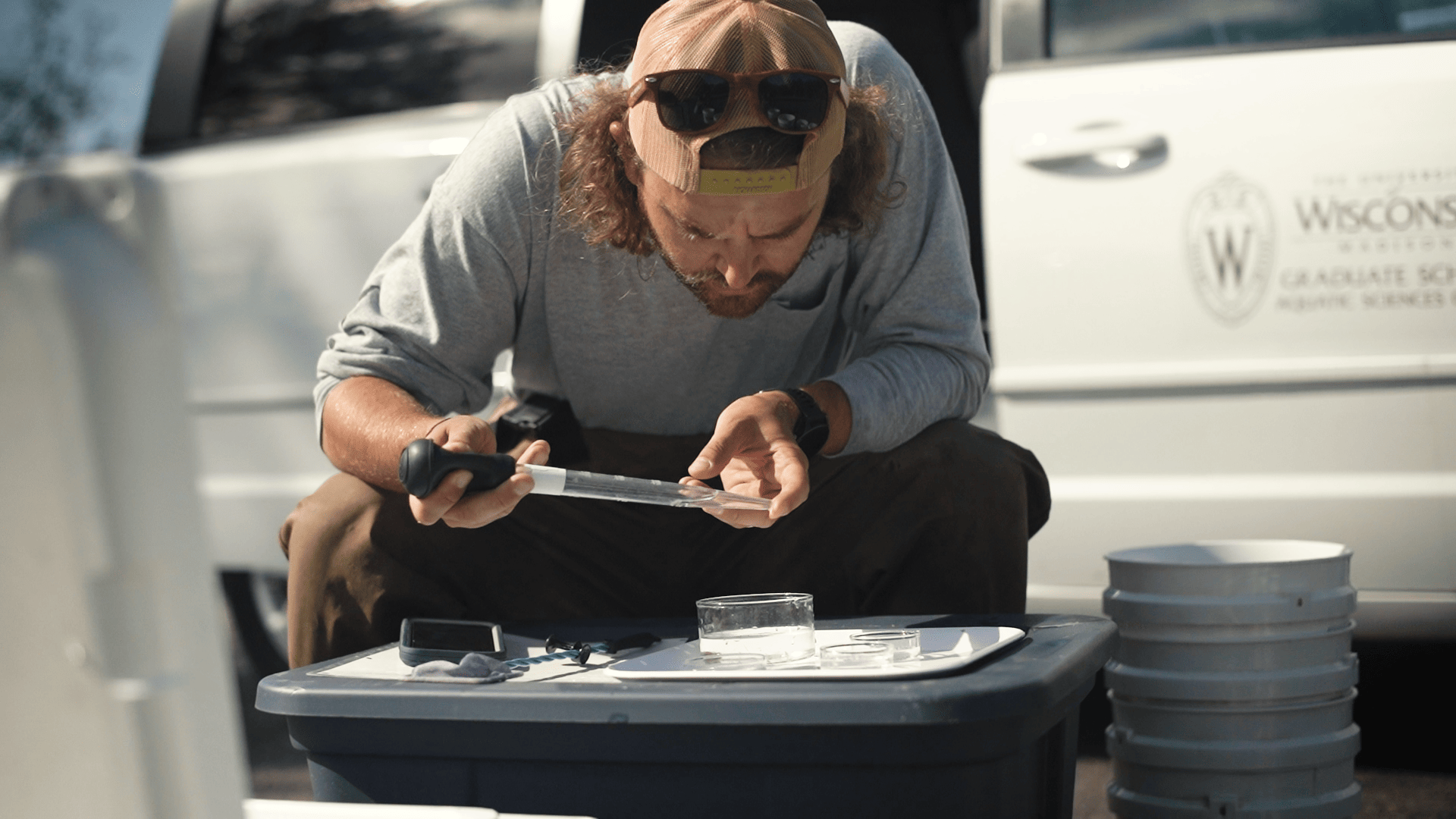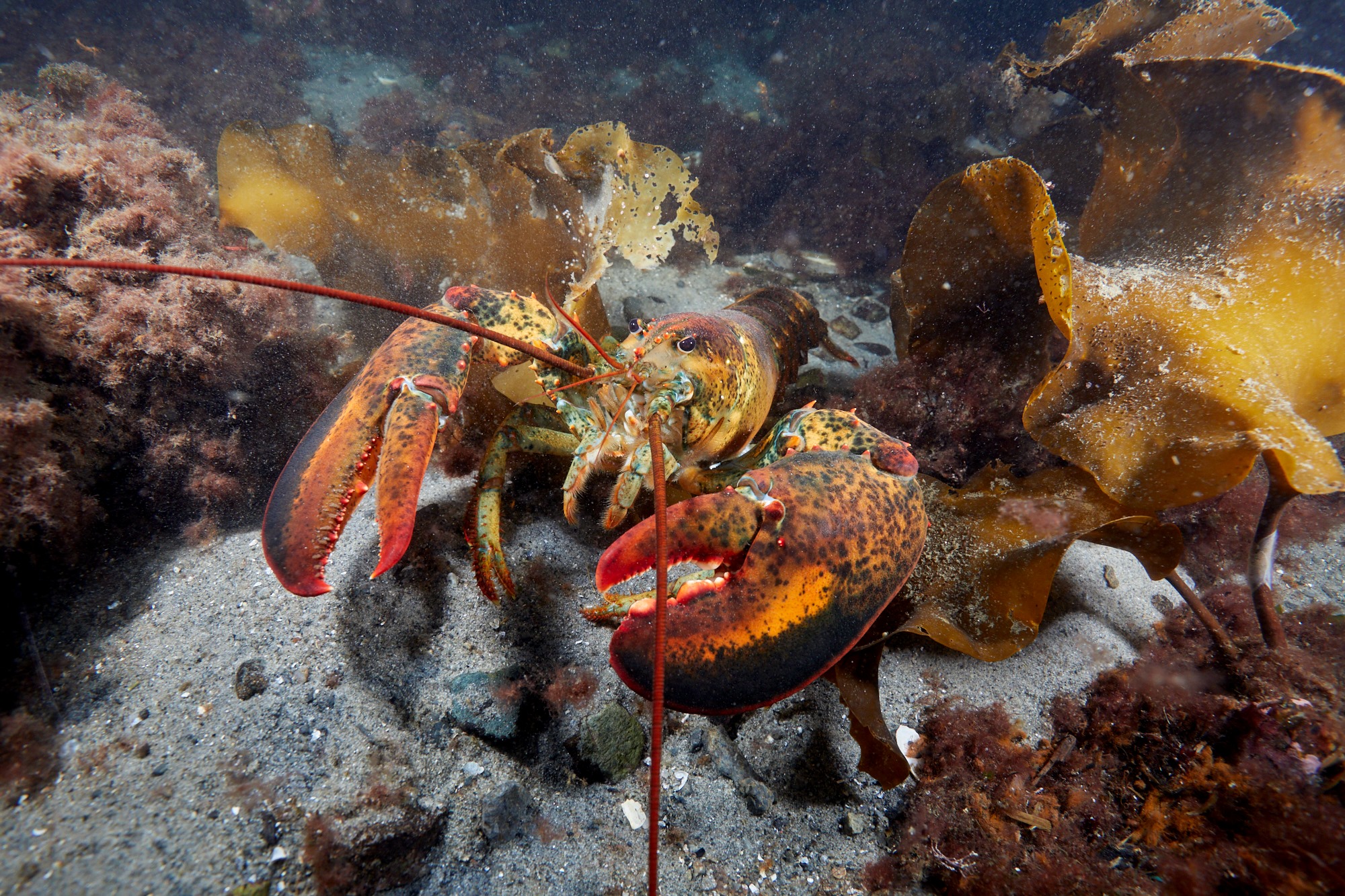Funding will support innovative marine debris prevention and removal

Today, the Department of Commerce and NOAA announced $27 million in funding for projects to prevent and remove marine debris in coastal and Great Lakes communities as part of President Biden’s Investing in America agenda, under the Bipartisan Infrastructure Law.
This funding will support innovative research and foster local coalitions to address urgent marine debris issues by using NOAA Sea Grant’s partnered approach to bring science together with communities for solutions that work.
“Marine debris can present significant threats to the water quality, habitats and economic opportunity for our coastal and Great Lakes communities, but thanks to President Biden’s commitment to investing in America, we are taking steps to remove and address marine debris,” said U.S. Secretary of Commerce Gina Raimondo. “With funding from the Biden-Harris Administration, these projects will help make sure coastal communities across the country have the tools and resources they need to address the harmful effects of marine debris head on, protect coastal and marine ecosystems and boost local economies.”
“By involving local communities in marine debris removal and prevention, we are not only tackling a pressing environmental issue but also fostering collaboration, innovation and sustainable practices that will strengthen community resilience,” said NOAA Administrator Rick Spinrad, Ph.D.
The projects were selected through two competitive opportunities: The Marine Debris Challenge Competition and the Marine Debris Community Action Coalitions.
Marine Debris Challenge Competition
Eleven projects across Alabama, California, Florida, Illinois, Massachusetts, New York, North Carolina, Oregon, Texas and Wisconsin were recommended for approximately $24 million in total funding. These projects will push the boundaries of existing marine debris prevention and removal technologies and approaches, and turn innovative research into tangible results.
Wisconsin Sea Grant
Pinpointing the key drivers for the bioaccumulation of nano- and low-micrometer microplastics in the Great Lakes using a modular pretreatment and plasmonic imaging platform
Project Lead: Haoran Wei, University of Wisconsin-Madison
Grant Amount: $1,916,505
This project will investigate the key factors contributing to the bioaccumulation of nano- and low-micrometer microplastics (<100 μm) in Great Lakes food webs. The project will develop a standardized, modular, and high-throughput analytical platform to study the occurrence, bioaccumulation and biomagnification of these small microplastics. Despite being the smallest fraction of microplastics, nano- and low-micrometer microplastics are not well understood due to the lack of reliable analytical tools for their detection.
Texas Sea Grant
Plastic-free restored habitats: Reducing nano-, micro- and macro-plastic pollution in community-based restoration of coastal shorelines and oyster reefs
Project Lead: Jennifer Beseres Pollack, Texas A&M University-Corpus Christi and Linda Walters, University of Central Florida
Grant Amount: $2,279,657
The goal of this project is to tackle the environmental issues stemming from plastic use in coastal habitat restoration. This project aims to employ a scientific approach to bring about significant change. It will assess the effectiveness of plastic-free materials such as basalt fiber mesh, biopolymer mesh, cement-infused jute, and traditional plastic (polyethylene) mesh in pilot experiments conducted in Texas and Florida, two critical coastal restoration hotspots.
Oregon Sea Grant
Beyond the drain: Tackling anthropogenic particle pollution sources to wastewater and biosolids across communities
Project Lead: Elise Granek, Portland State University
Grant Amount: $1,976,806
Tourism is a significant and expanding factor in the economies of U.S. coastal areas, but it places pressure on the municipal infrastructure, including water, wastewater and waste systems. This project aims to address the main sources of microplastics from coastal tourism by developing washing machine, dishwasher and clothes dryer filters and creating cost-effective air filtration devices. Additionally, it seeks to measure the effectiveness of intervention strategies in addressing challenges faced by the hotel industry in removing microplastics.
New York Sea Grant
Precision plastic waste cleanup and monitoring: AI-enhanced solution for sustainable waterways and ocean health
Principal Investigator(s): Beizhan Yan (Columbia University in the City of New York)
Grant Amount: $2,714,917
Current water-based plastic waste collectors, like Seabin, have difficulty distinguishing between plastics and naturally degradable debris, such as leaves and tree branches. This results in the indiscriminate collection of waste and places a strain on maintenance. This project aims to solve this issue by creating an intelligent AI-assisted plastic waste collector that uses image recognition and AI data processing techniques to pre-screen and differentiate plastic items from non-plastic trash.
New York Sea Grant
MOLLUSCA: A snail-inspired robot for efficient marine microplastic removal
Project Leads: Maha Haji and Sunghwan Jung, Cornell University
Grant Amount: $2,670,380
Existing plastic removal techniques are highly inefficient at removing microplastics and cannot easily distinguish microplastics from organic material leading to substantial bycatch. This project will develop a new bio-inspired marine robot that can be deployed in teams to efficiently remove microplastics from bodies of water. Inspired by the particle-capturing mechanism of snails, this project aims to create a microplastic collector robot called MOLLUSCA, which will utilize interfacial pumping and integrate a novel impedance spectroscopy sensor to detect and remove microplastics.
North Carolina Sea Grant
TRAcking Suspected Human-sourced marine DebrIs and Suspected Plastics via Ocean modeling, SAtellite imaging, and machine Learning (TRASH DiSPOSAL)s
Project Lead: Susan White, North Carolina State University
Grant Amount: $1,656,589
This project will advance the science of marine debris and sea pollution detection and monitoring. The marine debris dashboard to be created in this project will establish the first large-scale platform to promote investment and testing of technologies for removing marine debris and sea pollution. The platform will also offer a way to identify the communities most affected and involve the public in ocean cleanup efforts.
Woods Hole Sea Grant
Prevention, education, and removal of marine debris from underwater cultural heritage
Project Leads: Kirstin Meyer-Kaiser and Robyn Littlefield, Woods Hole Oceanographic Institution
Grant Amount: $1,609,504
The entanglement of marine debris on shipwrecks damages hotspots of biodiversity and degrades these monuments to human history at sea. This project will tackle the problem of marine debris entanglement on or near shipwrecks, including abandoned, lost, or discarded fishing gear by creating a set of policy recommendations for marine debris prevention and management, a set of interactive classroom lessons and a multimedia exhibit, and a low-cost ROV enabling rapid recovery of abandoned, lost, or discarded fishing gear.
Illinois-Indiana Sea Grant
AI-assisted characterization and capture of aquatic nano/microplastic debris
Project Lead: Kyoo-Chul Kenneth Park, Northwestern University
Grant Amount: $2,481,160
To address the challenge of removing microplastics from aquatic ecosystems and drinking water, it is critical to understand the sources from which they enter the water supply as well as their physical and chemical characteristics. Subsequently, we can develop efficient, scalable, and cost-effective methods based on metal organic frameworks, sponges, and bio-inspired architectures to prevent and remove microplastic contamination. This project will develop and test technologies for characterizing microplastic pollution, and for preventing and removing microplastics from aquatic ecosystems.
Florida Sea Grant
AI-powered characterization of solids and microplastics in stormwater runoff and their mitigation via green and gray infrastructure in urban coastal areas
Project Lead: Ali Ebrahimian, Florida International University
Grant Amount: $2,327,898
Stormwater runoff carries debris, including microplastics and other associated pollutants like toxic metals and PFAS (Forever Chemicals) from urban areas to coastal waters. This project will assess the performance of urban stormwater systems and use artificial intelligence and particle imaging to quickly and effectively identify microplastics in urban stormwater. The goal is to use the findings to create a tool that can help improve the design and functioning of urban stormwater systems to remove total suspended solids and microplastics while providing flood control.
University of Southern California Sea Grant
Detection and conversion of marine debris to make high-value products as a tool to protect coastal communities
Project Lead: Clay C. C. Wang, University of Southern California
Grant Amount: $1,999,255
Marine plastic debris, such as microplastics and fishing nets, presents a major issue. We urgently need sustainable methods to monitor, collect, and repurpose plastic waste in the ocean. This project will develop a hybrid chemical/biological approach to utilize this unique resource and recapture the carbon and energy contained in marine debris by turning ocean-sourced plastics into dyes for eco-friendly fashion and enzymes for environmentally friendly laundry detergents.
Mississippi-Alabama Sea Grant Consortium & South Carolina Sea Grant Consortium
Holistic detection, monitoring, and removal of microplastics using integrated sensing and filtration systems
Project Lead: Mark Ming-Cheng Cheng, The University of Alabama
Grant Amount: $2,346,891
This project will develop a portable, cost-effective integrated system of microplastic filters and sensors. The system will be capable of monitoring, capturing, and removing micro- and nanoplastics in water bodies in real time. In addition, the project will involve engaging potential user groups and conducting high-impact research and operations in marine microplastic removal.
Marine Debris Community Action Coalitions
Ten projects across California, Florida, New York, North Carolina, Pennsylvania, South Carolina, Wisconsin and Vermont were recommended for approximately $2.9 million in total funding. These projects will engage communities, groups and localities — particularly those that have been historically underserved — in translating research into collaborative marine debris removal and prevention efforts.
Lake Champlain Sea Grant
Foam-free Lake Champlain: Marine debris community action coalition
Project Lead: Kris Stepenuck, The University of Vermont and State Agricultural College
Grant Amount: $299,904
The shoreline of Lake Champlain, particularly in Plattsburgh, New York, and Burlington and St. Albans, Vermont, often accumulates foam-based marine debris. These areas are frequently accessed by underserved communities for subsistence fishing and recreation during the summer months. As a response, this project aims to establish a coalition of watershed and lake organizations in Vermont and New York, focused on addressing foam-based marine debris in the Lake Champlain basin. The goal is to improve community awareness of this issue and to take steps to mitigate the impact of foam-based marine debris.
Wisconsin Sea Grant
Fashioning a model response: Educating members of the fashion industry about microplastics to reduce marine debris in local waters
Project Lead: Virginia Carlton, University of Wisconsin-Madison
Grant Amount: $300,000
This project aims to address the problem of plastic pollution in Milwaukee. The project will target not only single-use plastics and litter but also microplastics that enter the water supply from textiles. The project will offer professional development workshops for college-level fashion department faculty, university students and K-12 teachers. Additionally, a new Center for Great Lakes Literacy asynchronous online short course will be piloted and launched. This course will specifically connect the fashion industry to marine debris prevention and complement existing Great Lakes Learning Education Exploration courses.
South Carolina Sea Grant Consortium
Our marsh counts: A watershed approach to marine debris reduction in South Carolina’s seafood capital
Project Lead: Kelly Thorvalson, South Carolina Aquarium
Grant Amount: $275,692
This project will assemble a robust coalition of partners to proactively tackle the increasing problem of marine debris in Murrells Inlet, South Carolina. The coalition will work to reduce the use of single-use plastics by businesses, residents, and tourists through community engagement and education. The project plan takes a comprehensive approach that includes all community voices to develop long-term solutions for removing and preventing marine debris in accordance with the 2014 Murrells Inlet Watershed Plan.
Pennsylvania Sea Grant
Philadelphia marine debris action coalition
Project Leads: Zach Nemec, Pennsylvania State University and Timothy Maguire and Andrew Kleiner, Academy of Natural Sciences of Drexel University
Grant Amount: $300,000
To address existing knowledge gaps in microplastic pollution on land, this project aims to investigate the presence of microplastics in six watersheds located in and around Philadelphia and Delaware Counties in the Upper Delaware Estuary Zone. The main goal of this project is to improve our scientific understanding of the extent of microplastic pollution in the Greater Philadelphia Region. Additionally, the project will involve creating an interactive program to educate and provide real-world experience for people to directly participate in the research and analysis process.
New York Sea Grant
Mitigation of storm water-derived debris: a community-based approach II
Project Leads: Mary Austerman, Cornell University and Christy Tyler, Rochester Institute of Technology
Grant Amount: $300,000
This project centers its efforts around stormwater-derived debris, specifically through the use of a trash capture technology known as the LittaTrap, which is designed to capture debris that enters storm drains. The project aims to expand its educational programs from Rochester, NY to the cities of Buffalo and Syracuse. Additionally, it plans to install more trash capture devices in storm drains across the region. The goal is to create a larger interconnected community network that is actively involved in preventing and remediating debris pollution in Western New York and the watersheds of Lake Ontario and Lake Erie.
New York Sea Grant
The Brooklyn-Queens marine debris clean up program
Project Lead: Kathleen Fallon, Cornell University
Grant Amount: $300,000
This project will build a local partnership to identify and actively address marine debris in two of New York City’s most environmentally distressed beaches, located in and around Jamaica Bay. The main objective is to remove and prevent debris at these beaches located in historically underserved communities, which have long been neglected by clean-up efforts and debris prevention measures. Additionally, the project seeks to engage diverse community members in accessible environmental stewardship activities to benefit their local beaches and natural ecosystems.
North Carolina Sea Grant
Protecting the Neuse River Estuary through Community-Engaged Prevention of Stormwater-Derived Litter in Urban Headwaters
Project Lead: Barbara Doll, North Carolina State University
Grant Amount: $298,851
This project will develop and test strategies to reduce litter by focusing on limiting stormwater-conveyed trash in urban areas and investigating human behaviors that contribute to littering. The project will also study how litter is transported to bodies of water and will evaluate methods to prevent litter from entering the stormwater system.
Florida Sea Grant
Plastic free Orlando: Building a community of ocean champions
Project Leads: Maia McGuire, University of Florida and Jon Paul Sherrington Brooker, Ocean Conservancy
Grant Amount: $295,876
Building on the success of Ocean Conservancy’s Plastics-Free Cities pilot project initiated in South Florida, this project will apply the same approach to Central Florida. It will focus on training young people as sustainability consultants, helping them acquire the skills to work with local businesses and encouraging them to voluntarily reduce their waste, particularly single-use plastics.
Florida Sea Grant
Preventing Marine Debris through the Zero Waste Miami Coalition
Project Leads: Ana Zangroniz, University of Florida and Madeline Kaufman, Debris Free Oceans
Grant Amount: $269,984
The purpose of this project is to address the urgent environmental issues caused by single-use plastics and marine debris in Miami-Dade County. Zero Waste Miami, a coalition spearheaded by Miami non-profit Debris Free Oceans, aims to bring together various stakeholders, including non-profits, businesses, and government entities, to create a local economy that emphasizes reducing, reusing, repairing, recycling, and composting materials. The project’s objectives are to initiate circularity projects, distribute zero-waste resources, and develop a community-driven Zero Waste Strategic Plan for Miami-Dade County.
California Sea Grant
Cultivating a tri-national marine debris leadership coalition to find solutions to complex cross-border land-based marine debris
Project Leads: Theresa Sinicrope Talley, California Sea Grant and Kristen Goodrich, Tijuana River National Estuarine Research Reserve
Grant Amount: $299,996
Solid waste management, including land-based debris, poses a major challenge in the San Diego/Tijuana border region, the ancestral lands of the Kumeyaay (Kumiai) Nation. This waste contributes to severe flooding, public health hazards, and environmental problems on both land and in the ocean, creating cross-border social and ecological dilemmas. The goal of this project is to cultivate a Marine Debris Leadership Coalition comprising leaders from both sides of the border and various sectors. This coalition will work to implement long-lasting and transformative solutions to address cross-border pollution by developing Tribal connections, deepening knowledge and nurturing cross-border relationships.
The full list of Marine Debris Challenge and Community Action Coalition project descriptions is available here.
The Community Action Coalitions advance President Biden’s Justice40 Initiative, which aims to ensure that at least 40% of the overall benefits from certain climate, clean energy and other federal investments flow to disadvantaged communities that are marginalized by underinvestment and overburdened by pollution and intensifying climate impacts.
“These programs will ensure that disadvantaged communities benefit from cleaner, safer coastal and marine environments,” said Jonathan Pennock, director of NOAA’s National Sea Grant College Program. “The impact of this funding will be extensive, enhancing the ecological health of our coastlines and the well-being of the people who depend on them.”
These projects are a component of the nearly $3 billion investment in NOAA’s Climate-Ready Coasts, Climate Data and Services and Fisheries and Protected Resources through the Bipartisan Infrastructure Law to address the climate crisis and bolster coastal resilience and infrastructure.
Visit NOAA’s Bipartisan Infrastructure Law and Inflation Reduction Act websites to learn how NOAA is collaborating with communities to build a Climate-Ready Nation, and to see current and future funding opportunities.


Amara Davis
Outreach Coordinator
National Sea Grant Office


